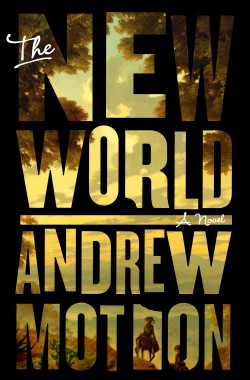 Nikki Celis
Nikki Celis
A review of
The New World
By Andrew Motion
The Crown Publishing Group
ISBN 978-0-8041-3845-1
“Pride, I suppose. Stubbornness. Greed. Some defect in myself, which proves I am my father’s son and also the son of Adam.” – Jim Hawkins, in Motion, Andrew. The New World. New York: Crown Publishers, 2015. Print.
Greed, a concept so familial with the psyche, is something that yearns to be satiated through our actions, whether it is to the benefit of others or not. It is thus both destructive and rewarding. This serves as the foundation and the driving force of Andrew Motion’s novel The New World, sequel to Silver (2012)—both serving as a follow-up to Robert Louis Stevenson’s literary classic, Treasure Island (1883).
Although The New World serves as the second book in the series, it works well as a standalone novel. Any reminders of Silver and Treasure Island were dispatched within the first few (short) chapters, save for Jim Hawkins Jr. and his un-reciprocating and wholly singular love interest, Natty Silver—descendants of Jim Hawkins and Long John Silver, respectively, both now former ghosts of themselves, stuck in the past and unable to let go.
Picking up immediately after the events of Silver, returning with the remaining treasure left behind in Treasure Island, Jim and Natty wake on the shores of Texas after surviving a devastating storm, leaving the ship, Nightingale, a wreck, and its crew drowned and deceased. The protagonists find themselves ‘robbed’ of their treasure, taken captive by a band of aborigines that Jim so eloquently calls “savages,” and are held prisoner for a period of time in the village. Upon being freed from confinement thanks to the innocence of a young girl, not yet corrupted by the villages’ more base, violent nature, Jim and Natty deem it fitting to claim a possession from the (sleeping) chief, Black Cloud: a prized silver necklace etched with carvings of animals. This single act of greed lays the stepping-stone for many of their encounters with various people throughout the story. Their journey home takes them from the desert of Texas to the Mississippi River and finally to New Orleans, while at the same time being relentlessly pursued by their former captor.
The degree of influence (as well as the repercussions) of colonialism and greed are apparent through the actions of the protagonists and their unwillingness to return what they have stolen—as well as through their encounters with the three tribes they meet over the course of their journey.
There’s Black Cloud and the Painted Man’s obsession—or love—of the necklace, a source of power that Black Cloud uses to enthrall the villagers, as well as instill fear in the tribes throughout the region; Chief White Feather and Hoopoe, members of a peaceful, spiritual tribe of Native Americans, who show particular disdain for the English more-so than the French or the Spanish as Jim notes in their initial interaction with Hoopoe, “…I thought he wanted me to understand that these new arrivals were scooping up the earth;” and the more direct and strikingly morose encounter with the third tribe, led by Chief Talks to the Wind and Fire Wife, driven from their land by the “White Man”, and as a result have become sick and destitute.
While, until nearing the end of the novel, Jim and Natty are being pursued by a vengeful and vicious Black Cloud, the aborigines of North America have been affected by their own Black Cloud as well: that of the destructive nature of British colonialism. It is a concept that is expertly conveyed, and one that should be lauded. However, Motion, is no Thomas King or Richard Wagamese, and even though he did plenty of research to characterize his Native American characters, there’s a typical disconnect (often evident when a non-minority writes about these subjects). Even still, Motion conveyed the story as proficiently, and beautifully, as he could.
Though Motion is able to illustrate each tribe quite eloquently and is also adept at distinguishing each individual with their own particular identity, each character other than the two protagonists (as is with many adventure novels) are static, one-note characters that, more often than not, are used to push the story forward. Jim’s passive and often self-absorbed personality is contrasted with that of Natty’s determined, also self-absorbed, take-charge attitude. As the two main characters of the story, both Jim and Natty are intended to be the individuals that the reader should be empathizing with the most. Rather, I often found myself frustrated with their actions, shaking my head and gritting my teeth with their selfishness.
However, such frustrations were abated due to Motion’s beautifully crafted descriptors as his background in poetry gives him the advantage of painting a scene that is not only aesthetically pleasing, but also emotionally alluring. Each chapter is relatively short, allowing readers to absorb each scene much more easily.
And, while the progression of the novel was quite slow, I found the pacing to be smooth and fitting, as The New World is not an action, swashbuckling romp, but that of discovery and reflection.
